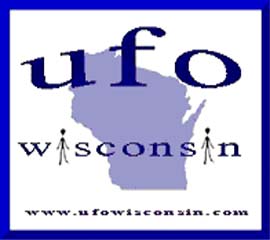 |
Home |
File a UFO Report |
View UFO Reports |
|
![]()
The Leonids TV Show
Date of Event: November 18, 2002
SOURCE: science.nasa.gov
The Leonids TV Show
NASA TV kicks off live coverage of the 2002 Leonid meteor storm on Monday, Nov. 18th.Nov. 16, 2002: The best place to watch the 2002 Leonid meteor storm is outside under the stars. But NASA TV isn't bad either.
On Monday, Nov. 18th at 11:00 p.m. CST (Tuesday, Nov. 19th at 0500 UT), NASA TV will kick off the 2nd-annual Leonids TV Show. "There are going to be two meteor outbursts on Tuesday morning-- one over Europe and a second over North America," says Mitzi Adams, a NASA astronomer who's organizing the show. "Our broadcast will cover both."
A team of NASA astronomers will host the night-long show. They'll offer observing tips, answer phone calls from sky watchers, and tour the skies with a video camera located at the Marshall Space Flight Center (MSFC) in Huntsville, Alabama.
"Observers around the world will be calling us with reports," says Adams. NASA spotters will be deployed at half-a-dozen sites ranging from Europe to the American desert southwest. "Many of our reports will come from them ... but not all," she says. Anyone can phone the show with meteor counts, anecdotes or questions. A toll-free number for members of the public will be posted on the web site SpaceWeather.com during the 5-hour broadcast.
During last year's Leonids TV Show hundreds of photographers submitted pictures of meteors, many of which were shown on the air. "We'll do the same thing this year," says Adams. "If you have a picture you can send it in via email using a link to appear on SpaceWeather.com."
The show will also transmit some weird sounds: Leonid radar echoes. "Here at the Marshall Space Flight Center we have a 'forward-scatter meteor radar,' " explains Rob Suggs, the leader of the MSFC Space Environments Team and one of the show's co-organizers. "It's basically a TV antenna and a ham radio receiver. Whenever a Leonid passes over a nearby TV transmitter, our receiver picks up the reflected signal. The 'ping' sounds really cool."
Suggs expects to record hundreds or thousands of eerie-sounding pings when the storm crests on Tuesday morning. "Try this," he suggests: "While you're out in your backyard watching the Leonids, turn up the volume on NASA TV and listen to the radar while you watch the sky. It's the perfect soundtrack for a meteor storm."
How do you tune in to the show?
NASA TV is broadcast from the geosynchronous satellite GE-2 located at 85 degrees west longitude. Tune to transponder 9C at 3880.0 MHz. Polarization is vertical and audio is monaural at 6.8 MHz.Fortunately, many cable and satellite TV providers carry the channel, so you don't need to worry about such details. Flip through your channels today and see if you can find NASA TV--or call your provider for more information. NASA TV is also broadcast live on the web.
There's no substitute for real sky watching, of course. But if it's cloudy where you live, or if you just need to dash inside for a while to warm up, try NASA TV. It's the next best thing to the Leonids.